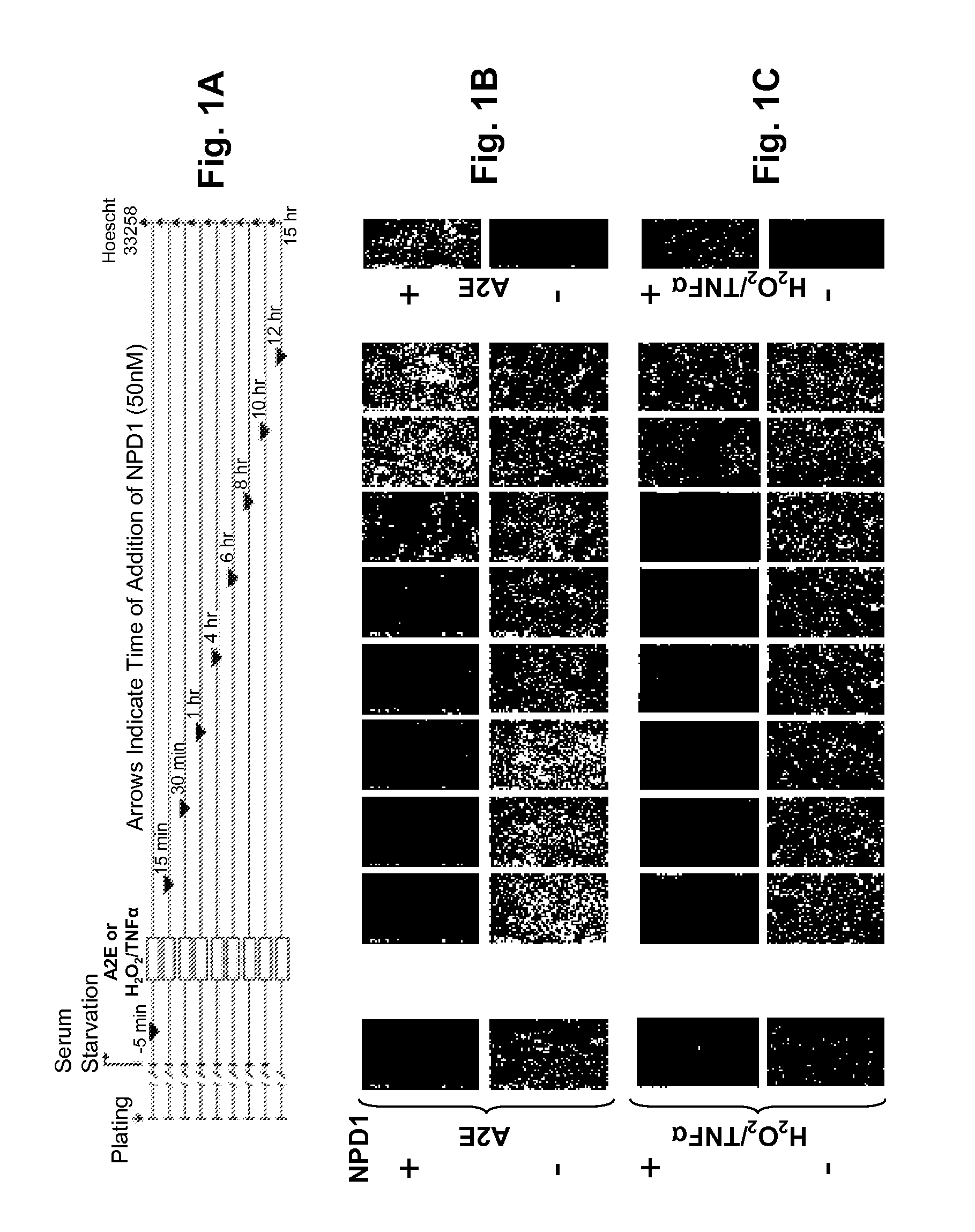DHA and PEDF, a Therapeutic Composition for Nerve and Retinal Pigment Epithelial Cells
- Summary
- Abstract
- Description
- Claims
- Application Information
AI Technical Summary
Benefits of technology
Problems solved by technology
Method used
Image
Examples
example 1
Promotion of Cornea Nerve Regeneration
[0042]The effect of treatment with PEDF and DHA after either LASIK or PRK surgery was evaluated for its potential to increase the corneal nerve surface area, and thus decrease the complications seen in patients of corneal hypoesthesia and dry eye. Using a recognized experimental model, a lamellar dissection was performed on six rabbits with the use of a crescent blade and scissors creating a pocket in the cornea using techniques similar to S. Esquenazi et al., “Topical combination of NGF and DHA increases rabbit corneal nerve regeneration after photorefractive keratectomy,” Investigative Opthalmology & Visual Science, vol. 46, pp. 3121-3127 (2005). The six rabbits were divided into two groups: (1) one group treated with PEDF and DHA (100 μg), and (2) one group treated with a vehicle (saline plus albumin). In both groups, the treatment solution was delivered in collagen shields applied to the eye that would dissolve in 72 hr, and were changed twi...
example 2
Materials and Methods
[0043]Human RPE cells. Cultures of retinal pigment epithelial (RPE) cells were prepared. RPE cells were seeded onto Millicell-HA culture plate inserts (Millipore, Bradford, Mass.), placed in 24-well plates, and allowed to reach confluence. Consent for use of tissue for research was obtained in compliance with Federal and State law and institutional regulations. Cultures were maintained in Chee's essential replacement medium until the experiments were performed as described in J. Hu and D. Bok (2001) Mol Vis 7:14-19. The medium includes Eagle's minimal essential medium with calcium (MEM, Irvine Scientific, Irvine, Calif.), 1% heat-inactivated calf serum (JRH Bioscience, Lennexo, Kans.), amino acid supplements, and 1% bovine retinal extract. The Millicell-HA filter inserts allow separate manipulation of the culture media bathing the apical and basal surfaces of the RPE monolayer and measurement of the transepithelial resistance (TER), which provides a measure of c...
example 3
A2E-mediated ARPE-19 Cell Damage is Attenuated by Neuroprotectin D1
[0050]A2E, a lipofusin component, accumulates in the RPE during aging, and, in an exaggerated manner, in age-related macular degeneration (AMD) and Stargardt macular dystrophy (an early onset form of AMD). As a consequence, RPE apoptosis precedes the demise of photoreceptors. A2E-induced oxidative stress in ARPE-19 cells was shown to be inhibited by NPD1. Seventy-two (72) hours after plating, ARPE-19 cells were serum starved for 4 hours. A2E (20 μM) was added in the presence of 430 nM light and O2 (see Materials and Methods). Other cells were exposed instead to H2O2 / TNFα. NPD1 was added prior to, or at different times after, A2E or H2O2 / TNFα, up to 12 hours. Time of NPD1 addition is indicated by black arrows on FIG. 1A. Hoechst 33258 was analyzed at 15 hours. FIG. 1B illustrates the appearance of Hoechst 33258 positive cells upon exposure to A2E and the effect of NPD1. FIG. 1C is similar to FIG. 1B, except that H2O2 / ...
PUM
| Property | Measurement | Unit |
|---|---|---|
| Composition | aaaaa | aaaaa |
| Therapeutic | aaaaa | aaaaa |
| Transparency | aaaaa | aaaaa |
Abstract
Description
Claims
Application Information
 Login to View More
Login to View More - R&D
- Intellectual Property
- Life Sciences
- Materials
- Tech Scout
- Unparalleled Data Quality
- Higher Quality Content
- 60% Fewer Hallucinations
Browse by: Latest US Patents, China's latest patents, Technical Efficacy Thesaurus, Application Domain, Technology Topic, Popular Technical Reports.
© 2025 PatSnap. All rights reserved.Legal|Privacy policy|Modern Slavery Act Transparency Statement|Sitemap|About US| Contact US: help@patsnap.com



